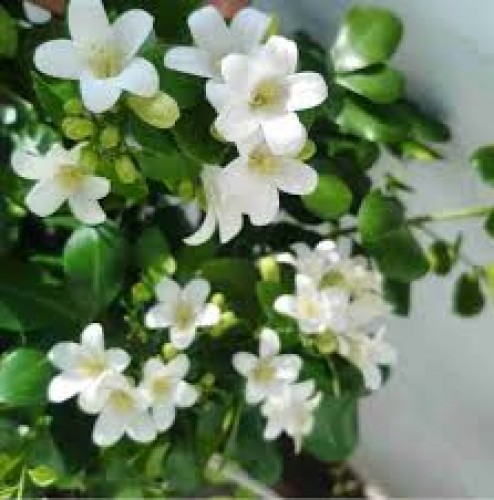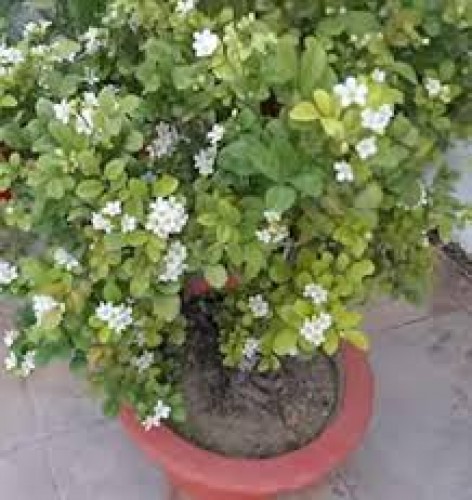60%
off
off
-
Sold
-

-

out
Madhukamini (Murraya paniculata)
Madhukamini, also known as Orange Jasmine or Kamini, is a fragrant evergreen shrub or small tree native to South and Southeast Asia. Renowned for its glossy green foliage and clusters of white, jasmine-like flowers, it is cherished both for its ornamental beauty and traditional medicinal uses.
Botanical Overview
- Scientific Name: Murraya paniculata
- Family: Rutaceae
- Common Names: Madhukamini, Orange Jasmine, Kamini
- Origin: South and Southeast Asia
- Growth Habit: Evergreen shrub or small tree
- Height: Typically 3–7 meters; can be pruned to desired size
Key Features
- Flowers: Small, white, fragrant blooms resembling jasmine; bloom throughout the year in suitable climates.
- Foliage: Glossy, dark green leaves that provide a lush appearance.
- Fragrance: Sweet, orange-like scent that is especially potent during the evening.
- Wildlife Attraction: Attracts bees, butterflies, and birds, enhancing garden biodiversity.
Cultivation & Care
- Sunlight: Prefers full sun to partial shade; at least 6–8 hours of sunlight daily.
- Soil: Thrives in well-draining, fertile soil; tolerates a range of soil types including sandy and loamy soils.
- Watering: Requires regular watering, especially during dry periods; avoid waterlogging to prevent root rot.
- Fertilization: Apply a balanced, slow-release fertilizer during the growing season to promote healthy growth and flowering.
- Pruning: Regular pruning helps maintain shape, encourages bushier growth, and removes dead or diseased branches.
- Propagation: Can be propagated through seeds or semi-hardwood cuttings; using rooting hormone can enhance success rates.
Uses & Benefits
- Ornamental: Popular choice for hedges, borders, and container planting due to its dense foliage and fragrant flowers.
- Medicinal: Traditionally used in Ayurveda and other systems for its anti-inflammatory, analgesic, and antimicrobial properties; parts of the plant are used to treat digestive issues, skin ailments, and respiratory conditions.
- Aromatherapy: The plant's fragrance is known to have calming effects, aiding in stress relief and promoting restful sleep.
- Cultural Significance: Considered auspicious in various cultures; often used in religious ceremonies and traditional rituals.
Considerations
- Toxicity: Contains alkaloids that may be mildly toxic if ingested in large quantities; keep away from pets and children.
- Maintenance: While generally low-maintenance, regular care ensures optimal growth and flowering.